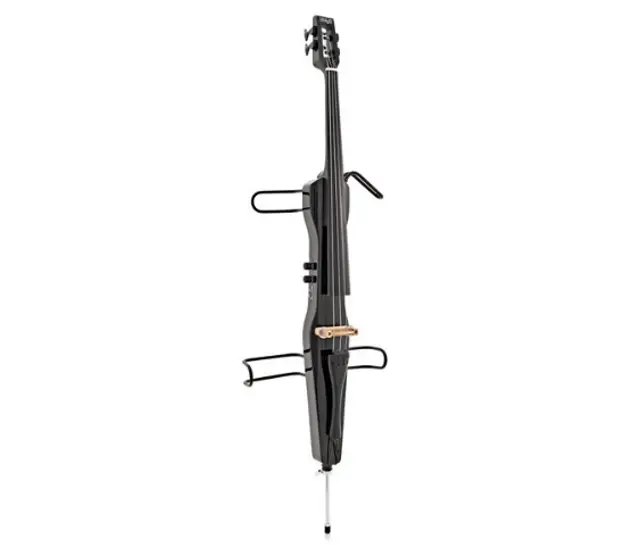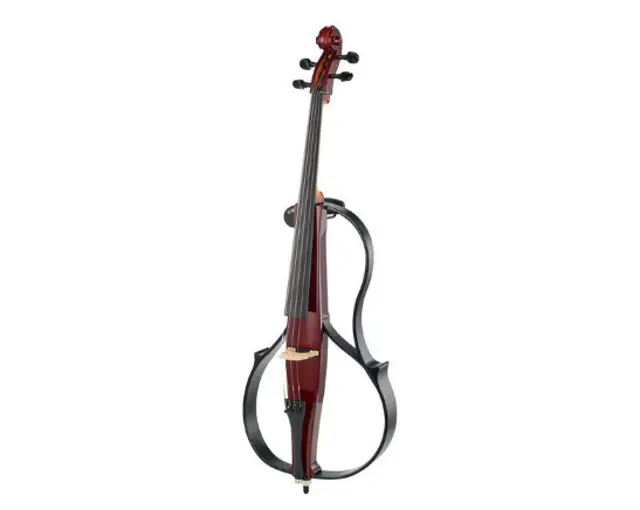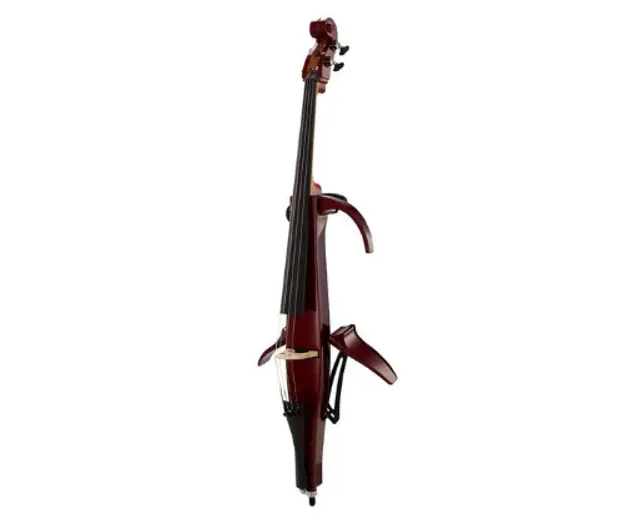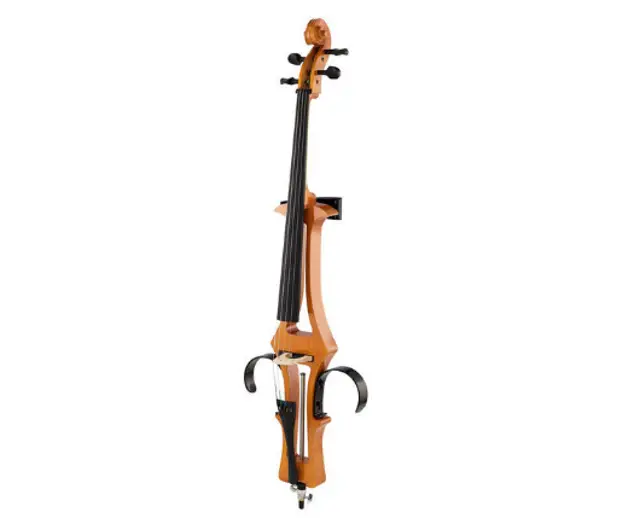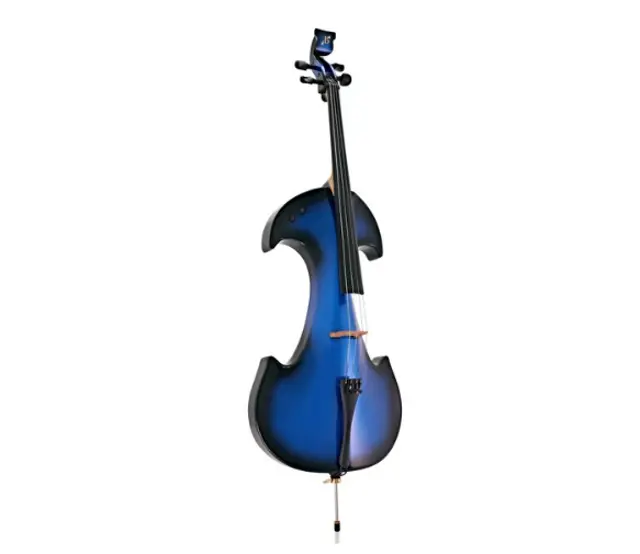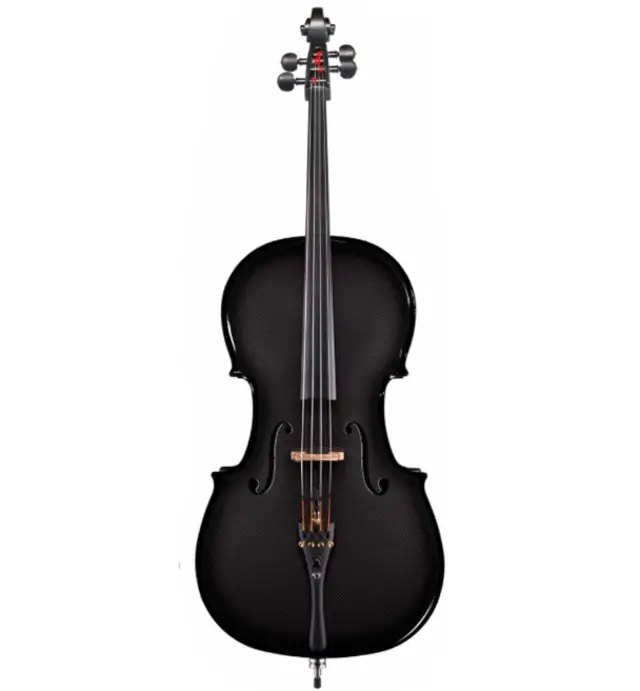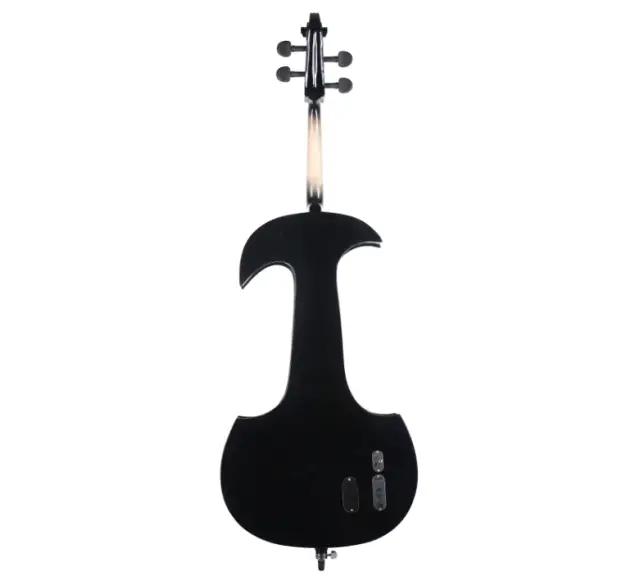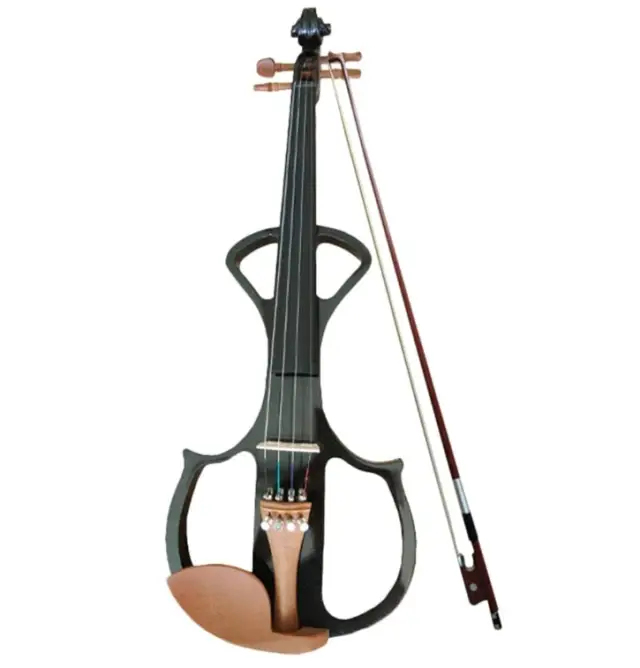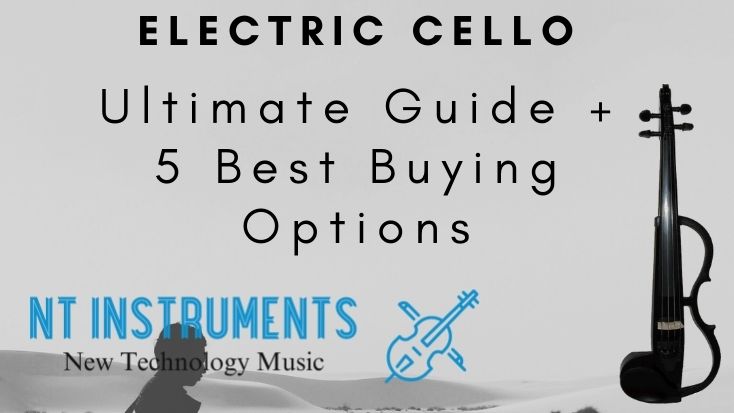
Electric Cello Ultimate Guide: Overview + 5 Best Options to Buy
The cello has been around since the 17th century and is an indispensable part of any orchestra. It delivers a warm tenor sound that provides melody in a composition. While we are all familiar with the traditional cello, there is also a newer, more modern version in the electric cello.
This guide will provide a complete overview of the electric cello. What it is, what to look for, how to choose one and whether you should. We will also answer common questions around the electric cello and its suitability as an instrument for you to learn.
By the end of this page you should have a much clearer idea of what an electric cello is, what it sounds like and whether you would like to learn to play one.
Contents
Five Electric Cello Options Worth Buying
Musical instruments are a very personal purchase. What may be good for us won’t work for you and vice versa. There are a few instruments universally recommended though and five of them are listed below:
1. Stagg Electric Cello
The Stagg Electric Cello is a beginner instrument and is priced accordingly. It’s a stick design made from ebony, with a gloss back finish. It’s a very modern design with guitar like neck and pegs, a contrasting pickup and modern appeal.
The Stagg Electric Cello comes complete with a bow and a gig bag for safe transport. It also includes connectors for amplifiers or headphones and onboard tone controls for ease of use.
2. Yamaha SVC 110
The Yamaha SVC 110 Electric Cello is widely regarded as one of the most acoustic sounding electric cello. It is a very popular instrument that has a hollow body, maple neck and ebony fingerboard and is shaped to deliver the familiar touchpoints.
It’s a full size instrument with 4 D’Addario Helicore strings, built-in picket and reverb system and a soft case. There is an AUX in and Line out jack too.
3. Yamaha SVC 210
The Yamaha SVC 210 is a different design to the 110 with a more stick-like design with hollow resonating chamber. It’s a full size instrument that delivers an exceptional quality sound. This design means the cello is very portable and easy to handle, ideal if you travel to performances.
The SVC 210 has foldable leg supports, removable elements and a soft bag for transport. It comes with its own reverb system and everything you need to begin playing right away.
4. Harley Benton HBCE 990AM
The Harley Benton HBCE 990AM electric cello looks amazing. The natural wood finish looks great while the maple neck adds a dark contrast to the light birch body. It doesn’t use traditional materials but that works in its favour.
The Harley Benton HBCE 990AM is an entry level instrument designed for beginners. It’s a stick design with an aluminium tailpiece and fine tuners and comes with a bag and bow.
5. Bridge Draco Electric Cello
The Bridge Draco Electric Cello has a more traditional look with a more cello-like shape. It has a hollow body to help with tone and traditional pegs for tune. The cello has a unique Kevlar and carbon fibre body which adds a nice richness to the sound.
The Bridge Draco Electric Cello comes with D’Addario Helicore strings, Wittner lightweight alloy tailpiece, hard case with wheels and a bow. It’s playable out of the box.
We consider each of these electric cellos worth investigating if you’re in the market.
The Harley Benton and Stagg are ideal beginner pieces while the Yamahas and Bridge Draco are more suited to experienced cellists. There are other instruments on the market at wildly varying price points but if you select one of these five electric cello, you won’t go far wrong.
What is an electric cello?
The electric cello is the reimagining of the cello for the modern audience. Much like the traditional violin has an electric counterpart, so does the cello.
Rather than using the wood, the body and type of string to create the sound, the electric cello uses electronic pickups. This allows a lot of freedom in terms of design and size of the instrument as the sound is not influenced by acoustic resonance like a traditional cello.
Specifically, an electric cello uses between one and eight piezo pickups mounted in the bridge to produce sound. Many instruments will also have a built-in preamp from which you can control the sound.
Electric cello buyers guide
What do you look for in an electric cello? What makes a good electric cello different from a great one? What should someone new to this version of the instrument look for in their electric cello?
We think there are five main considerations you need to make when considering an electric cello:
- Size and shape
- Aesthetics
- Electronics
- Sound
- Price
These qualities are in no particular order as different musicians will value some over others. Let’s take a look at each.
1. Electric cello size and shape
An electric cello will usually be designed to be a similar size to the classical cello. It will also often include the same touchpoints such as the lower bouts where you would place your knees, the base of the neck where you place your thumb in the middle position and the back of the neck where it rests against the chest.
The upper bout, where a traditional cello rests against the shoulder is often but not always recreated to mimic the classic shape.
The more experienced the cellist, the less dependent they will be on these touch points. Some may find they miss the feel of the instrument on the knee or chest and will buy a shape to match.
Others will find they are comfortable enough without having these touchpoints and will have much more freedom over the size and shape of the cello.
The final benefit of an electric cello is that it is usually more portable. Some models are lighter than others but all will be less bulky. They will need equal care when being moved and stored but an electric cello is much more portable than a traditional one!
2. Electronics
Different manufacturers tend to use their own electronics in their instruments. For example, Yamaha uses their own piezo pickups across their cello range. Some models will also have an enclosed void to help add character to the sound. NS Design cellos use their own Polar Pickups and Bridge cellos use the company’s own crystal piezo designs.
There is very little to choose between those on paper. Each type of pickup is able to create a rich, sonorous sound. It will eventually become a matter of which sounds better to your ear when choosing between them.
3. Electric cello aesthetics
The aesthetics of an electric cello build on the size and shape. While secondary to the sound, many cellists have definite preferences when it comes to how their instrument looks.
Some performers prefer their electric cello to closely resemble a classical cello so the audience knows exactly what is being played. Others like the shock value or novelty of a stick cello or more outlandish shape.
Choosing an electric cello is as much about feel as in looks. While you may prefer a particular brand or design, you will need to try it before you buy it. You really need to know if you are comfortable without those touchpoints and whether the cello feels as good in the hands as it looks on the stand.
4. Electric cello sound
One significant advantage of an electric cello is the range of sound it can produce. While some purists may not consider the classical tone of an electric cello to be worthy of playing, most musicians consider them a viable instrument in their own right.
You won’t see an electric cello in a classical orchestra anytime soon but you will see them elsewhere. Many classical cellists also own and play electric cello. This is partly as it can be a silent cello, ideal for practice but also because it can be tuned to suit a wide variety of musical genres.
A cellist who loves classical but also loves jazz or blues is likely to have both types of instrument. A musician who also plays rock or other genres will definitely have an electric cello!
An electric cello can be tuned to sound almost the same as a classical cello or be tuned completely differently. You can use effects similar to electric guitar with a cello, which can change the sound completely.
This flexibility in sound reproduction is the main reason electric cello are so popular.
5. Electric cello price
Electric cellos are cheaper than traditional instruments but you should still expect a significant investment. A good quality electric cello will cost over $1,000 up to several thousand. As with any instrument, the higher the quality the better the sound and the higher the price.
Student instruments are cheaper and more accessible but once you begin climbing the ladder of accomplishment, your ear will demand a better instrument. This is the same for all instruments and not unique to the electric cello.
How does the sound differ between a traditional and electric cello?
There isn’t as much difference between the two instruments as you might think. Experienced musicians will of course be able to differentiate between the two but the layman is unlikely to notice if the electric cello is tuned to mimic the classical instrument.
As the sound is controlled by electronics, the electric cello has much more freedom in the sound it produces.
It can be tuned to sound almost identical to a traditional cello. It can also use effects to change that sound completely. You can use a wah pedal for example, introduce distortion, use chorus and mix the sound further if you wanted to.
Is the electric cello suitable for beginners?
The electric cello could be suitable for beginners but most music teachers prefer you learn the traditional instrument first. The electric cello is lighter and easier to handle but many teachers insist that those first steps should be taken with the traditional instrument so you learn proper form and technique.
There is a lot to recommend this approach. If you want to be a professional cellist, learning properly from the outset will make your development much easier than having to relearn technique later on.
So while an electric cello is physically easier for those not used to its size, it is not usually recommended for beginners.
Are silent electric cello really silent?
You will often see electric cello marketed as silent cello. This is because the pickup requires power to produce noise. The term is mainly used with solid body cellos. Those with acoustic chambers like the Yamaha 110 or Bridge Draco will produce a low volume sound without power.
If you need to practice quietly, you have two options. You can play the electric cello acoustically with no power or plug headphones into the jack. Either will deliver as close to silent play as it is possible to have. Ideal for musicians who live with family, in flats or where other people are in close proximity.
Do you need an amplifier to play an electric cello?
You will need a sound system, amplifier or headphones to play an electric cello. Hollow body cello can produce sound of its own but solid-body instruments rely entirely on pickups to deliver sound. You will need a speaker of some kind to hear it.
While you could use an off the shelf amplifier, you want to make sure the one you buy is capable of reproducing the range the electric cello is capable of. Like the instrument itself, amplifiers range massively in terms of cost and quality of sound.
Summing up
The electric cello is a very interesting instrument. Just like the best electric violins, the range of shapes, sizes and sounds varies immensely and it will take trial and error to find the right one for you.
Once you do settle on a make and model, the flexibility in sound and effects not available with any other instrument. Once you try an electric cello, the opportunities to experiment with sounds, genres and types of performance will soon have you hooked!
- Viola vs Violin – 5 Key Differences Between The Two Instruments - March 20, 2024
- 15 of the Most Famous Violinists of All Time (18th Century to Present) - March 20, 2024
- Full School Band Instruments List (Elementary / Middle / High) - March 18, 2024

